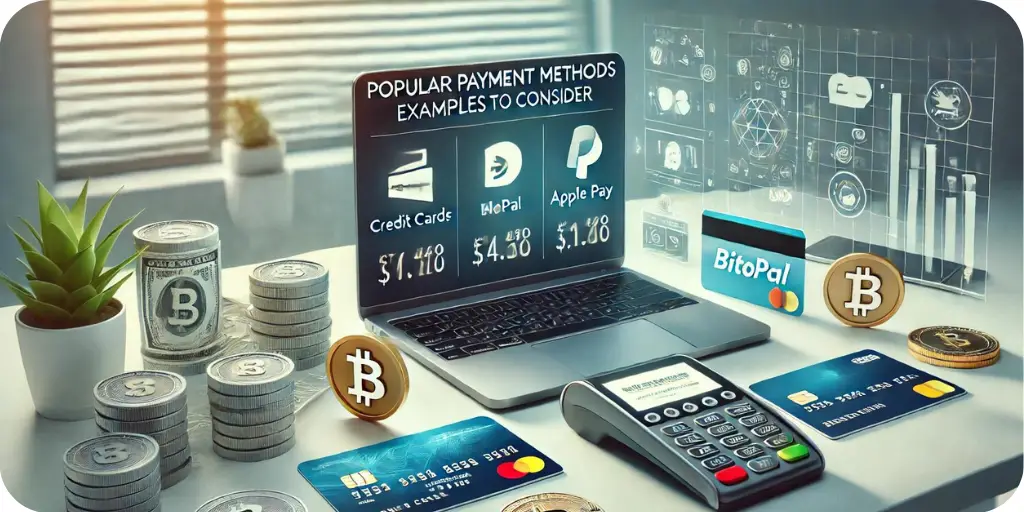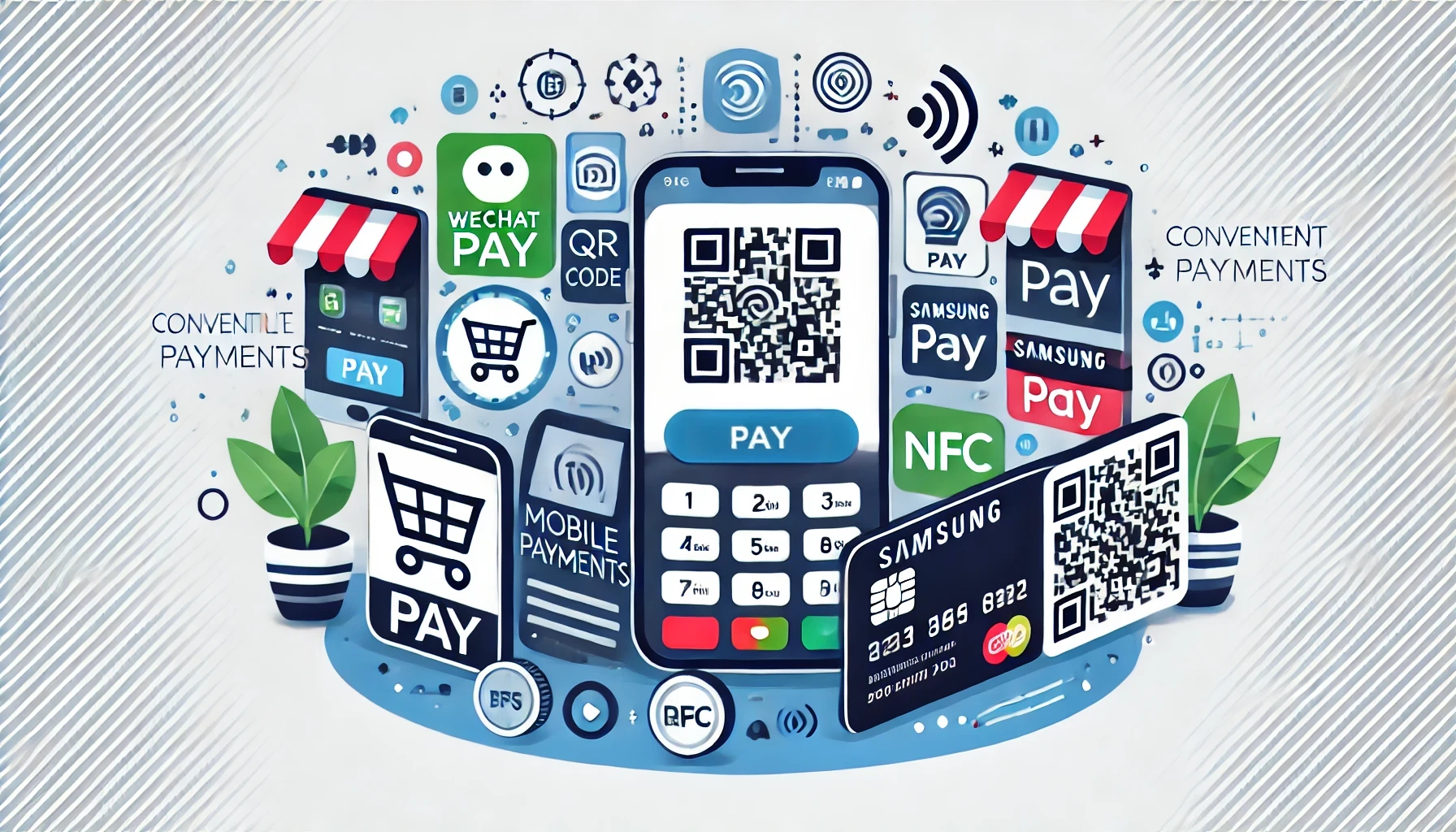Popular Payment Methods: Examples to Consider

Popular Payment Methods: Examples to Consider
By 2026, the most popular eCommerce payment methods globally are expected to be digital wallets (54%), credit cards (16%) and debit cards (10%).[1]
With the rise of e-commerce, digital services, and mobile technology, payment methods have diversified to meet the growing demand for speed, convenience, and security. Businesses looking to expand globally or enhance their customer experience must understand the most popular payment methods and how they shape consumer behavior.
In this article, we’ll explore some of the most popular payment methods worldwide, providing examples to help businesses make informed decisions about which options to offer.
Most popular payment methods
Digital Wallets
Digital wallets have surged in popularity, particularly in regions where mobile usage is widespread. These wallets allow users to store payment information and make transactions quickly and securely via smartphones or computers. The convenience, combined with enhanced security features like tokenization, has made digital wallets a favorite among consumers.
Examples of popular digital wallets:
- PayPal: A global leader, PayPal allows users to make payments using stored credit or debit card information. It’s widely accepted across various platforms, making it a staple for e-commerce businesses.
- Alipay: Dominating the Chinese market, Alipay is integrated into various services, including ride-sharing, online shopping, and in-store payments. It supports QR code transactions and mobile transfers, making it incredibly versatile.
- Apple Pay and Google Pay: Both of these services enable users to store card details on their devices, allowing for contactless payments at brick-and-mortar stores as well as in-app and online purchases.
Credit and Debit Cards
Despite the rise of alternative payment methods, credit and debit cards remain dominant across many regions[2] . These cards offer consumers a familiar, reliable, and widely accepted way to pay for goods and services, both online and in physical stores.
Examples of card providers:
- Visa and Mastercard: These two giants dominate the global market, providing consumers with secure and convenient ways to pay both online and offline. Their widespread acceptance makes them a must-have payment option for any business.
- American Express: Known for catering to higher-end consumers, American Express cards often come with exclusive rewards programs, making them particularly appealing for affluent customers.
- UnionPay: As China’s primary card payment system, UnionPay has gained international traction and is often accepted in countries with large Chinese tourist or expatriate populations.
Bank Transfers and Direct Debit
In regions where trust in financial institutions is high, bank transfers and direct debits are popular payment methods. These allow consumers to make payments directly from their bank accounts, often with no need for third-party intermediaries.
Examples of bank transfer systems:
- SEPA (Single Euro Payments Area): SEPA enables businesses and consumers across Europe to make bank transfers in euros without the complexities of international payment processing. It’s particularly useful for recurring payments like subscriptions.
- ACH (Automated Clearing House): In the U.S., ACH is widely used for transferring funds directly between bank accounts. It’s a common choice for payroll, utility payments, and online transactions.
- Sofort: In Germany and other European countries, Sofort allows consumers to make real-time bank transfers without needing to create an additional account, ensuring both convenience and security.
Real-Time Payments
Real-time payment systems allow for instant transfers of funds, making them ideal for businesses and consumers alike. These payments are typically settled within seconds, providing a quick and efficient way to manage cash flow.
Examples of RTP systems:
- Pix (Brazil): Launched by the Central Bank of Brazil, Pix has revolutionized payments in the country. It allows individuals and businesses to make instant payments 24/7, driving significant growth in digital transactions due to its exceptional user experience.
- UPI (India): The Unified Payments Interface (UPI) is a real-time payment system that allows users to link multiple bank accounts to a single mobile application, simplifying digital transactions. It has become the primary payment method for both online and offline purchases in India.
- Faster Payments (UK): In the UK, the Faster Payments Service enables real-time bank transfers, with most payments processed within minutes. It is especially popular for peer-to-peer payments and business transactions.
Buy Now, Pay Later (BNPL)
Buy Now, Pay Later (BNPL) services have gained popularity, particularly among younger consumers. These services allow customers to make purchases and pay for them in installments over time, often interest-free. BNPL can help increase conversion rates for businesses by offering consumers more flexible payment options.
Examples of BNPL services:
- Klarna: Popular in Europe and the U.S., Klarna allows customers to split their payments into interest-free installments. Its seamless integration with online stores makes it easy for consumers to choose BNPL at checkout.
- Afterpay: A leader in the BNPL space, Afterpay enables users to pay for purchases in four interest-free installments. It’s especially popular in Australia and the U.S.
- Affirm: Operating primarily in the U.S., Affirm offers transparent financing options, allowing consumers to split purchases into installments with no hidden fees.
Cryptocurrency
While still relatively niche, cryptocurrency is becoming a viable payment method for businesses looking to attract tech-savvy consumers. Cryptocurrencies like Bitcoin and Ethereum offer decentralized, secure, and fast transactions. However, their volatility and regulatory uncertainty can pose challenges.
Examples of cryptocurrency payment solutions:
- BitPay: BitPay is one of the most widely used cryptocurrency payment processors. It allows businesses to accept Bitcoin and other cryptocurrencies and automatically convert them into local currency to avoid volatility.
- Coinbase Commerce: A solution from the popular cryptocurrency exchange, Coinbase Commerce enables merchants to accept payments in a variety of digital currencies.
Cash
Despite the rise of digital payments, cash remains a widely used payment method in many parts of the world[3] , particularly in developing economies. Cash transactions are immediate and don’t require consumers to have a bank account or digital wallet.
Examples of cash usage:
- Latin America: In regions like Latin America, cash still accounts for a significant percentage of transactions, especially for in-person purchases. Businesses targeting these markets must consider offering cash-on-delivery options to cater to consumer preferences.
- Africa: In parts of Africa, cash is still the dominant payment method, particularly in rural areas where access to digital payment systems is limited. Mobile money solutions like M-PESA are slowly changing this, but cash remains a key player.
Mobile Payments
Mobile payments refer to transactions made using smartphones, either through apps, QR codes, or NFC (Near Field Communication) technology. They have become increasingly popular in markets where smartphones are the primary device for internet access.
Examples of mobile payment solutions:
- WeChat Pay: In China, WeChat Pay is integrated into the widely used WeChat messaging app, allowing users to make payments for everything from groceries to utility bills.
- Samsung Pay: Leveraging NFC and MST (Magnetic Secure Transmission) technology, Samsung Pay allows users to make payments at any terminal that accepts cards, making it one of the most versatile mobile payment solutions available.

Examples of mobile payment solutions
The Future of Online Payments Across the Globe
Although digital wallets are quickly rising to dominance in various regions, the organic growth of regional payment methods reflects local preferences and technological infrastructures. Multinational companies must recognize that each country’s payment landscape is shaped by its shopping habits, technological advancements, and existing financial institutions.
For example, while cash-based payments may seem counterintuitive for online purchases, they can be the exact solution consumers need in markets where digital literacy is low or where financial inclusion remains a challenge. This is particularly evident in regions like Latin America and Africa, where cash remains a prevalent form of payment despite the global shift toward digital methods.
As payment trends continue to evolve, businesses must remain flexible and open to new ideas. Understanding local preferences is key to thriving in international markets. The payment method that works in Europe or North America may not resonate with consumers in Asia or Africa. This is where partnering with a payment service provider that understands regional nuances becomes crucial.
CommerceGate is dedicated to helping online merchants navigate the complexities of global payments. Our expertise ensures that businesses are equipped with the right payment solutions to meet local demands while also complying with regulations.
[1] https://www.statista.com/statistics/1111233/payment-method-usage-transaction-volume-share-worldwide/
[2] https://paymentscmi.com/insights/top-global-payment-methods/
[3] https://www.sesami.io/blog/is-cash-still-widely-used
